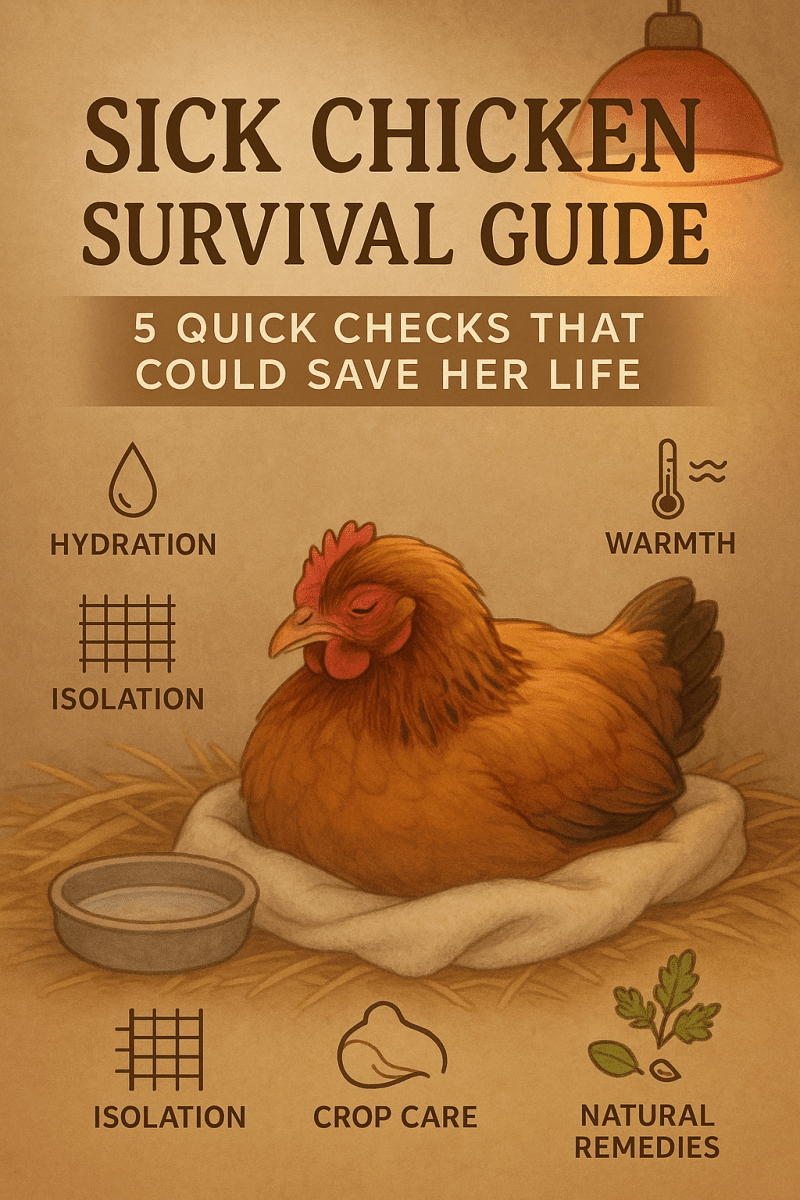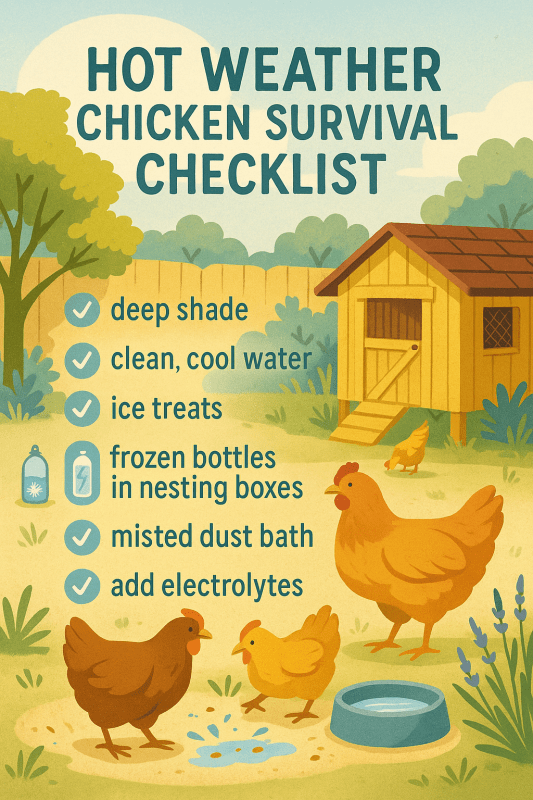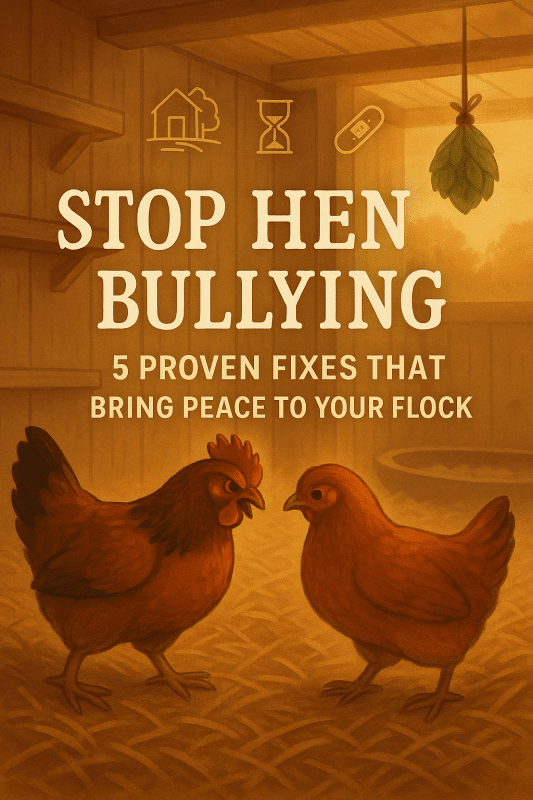Your favorite hen isn’t herself today.
She’s fluffed up in the corner. Quiet. Not eating. Not moving much.
Don’t panic. But don’t wait.
The first 24 hours matter more than you think—and often, what you do right now is what determines whether she pulls through or fades fast.
Here’s your no-fluff, backyard-vet-approved checklist to triage, treat, and turn the tide for a sick chicken.
🐔 First: Trust Your Gut
If you think something’s wrong—it probably is.
Chickens hide their symptoms until they physically can’t anymore. So by the time you notice something’s off, you’re already in the red zone.
✅ Step 1: Isolate & Observe
Why it matters:
You don’t want her getting picked on—or spreading something contagious.
What to do:
-
Gently move her to a quiet, warm area (inside if possible)
-
Offer clean water and familiar food
-
Observe: droppings, posture, breathing, crop feel, comb color
Watch for red flags:
-
Green, foamy, or bloody poop
-
Raspy breathing or sneezing
-
Lethargy, wobbly walking, head tucked
-
Pale or purple comb
💧 Step 2: Hydrate Immediately
Dehydration can kill faster than starvation.
If she’s not drinking, you need to act.
What to do:
-
Offer water with electrolytes or a splash of apple cider vinegar
-
Use a syringe or dropper to offer water at the side of her beak (never force it down her throat)
-
Add warmth: room temperature fluids help internal balance
Pro tip: Electrolyte powders or Sav-A-Chick mixes are gold in your chicken first aid kit.
🍳 Step 3: Check Her Crop
The crop is that pouch near her breast. It should be:
-
Full but soft in the evening
-
Empty by morning
If it’s hard, sour-smelling, or mushy, she might have sour crop or an impaction.
What to do:
-
Gently massage the crop downward
-
Withhold food for 12–24 hours
-
Offer warm water with probiotics
Still bad after 24 hours? That’s vet time.
🌡 Step 4: Warm Her Up
Sick chickens often drop body temperature. That leads to shock, even death.
What to do:
-
Use a heat lamp, heating pad (on low), or warm towels
-
Target temperature: 85–90°F
-
Make sure she can move away from the heat if she gets too warm
Never use heat blindly—observe for panting or restlessness.
💊 Step 5: Boost Her Immunity
You don’t need antibiotics to give her a fighting chance—just support her system.
What to do:
-
Add crushed garlic or oregano to her feed
-
Mix in plain yogurt for probiotics (small amounts)
-
Use a poultry vitamin booster if available
-
Keep her stress-free, quiet, and dark at night
☀️ The Next 24 Hours
You’ll know by the next day if she’s turning a corner.
Signs of improvement:
-
Drinking on her own
-
More alert eyes
-
Poop normalizing
-
Willing to peck at food
If she worsens—or you notice neurological symptoms (head tilting, paralysis)—call a vet. Fast.
🐣 Bottom Line: Act Fast, Stay Calm
You don’t need a medical degree or a panic button. Just quick observation, clean care, and calm energy.
Because when a hen goes down, what you do in the first 24 hours can save her life.



